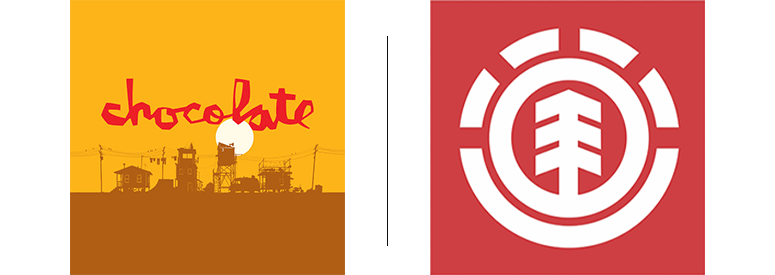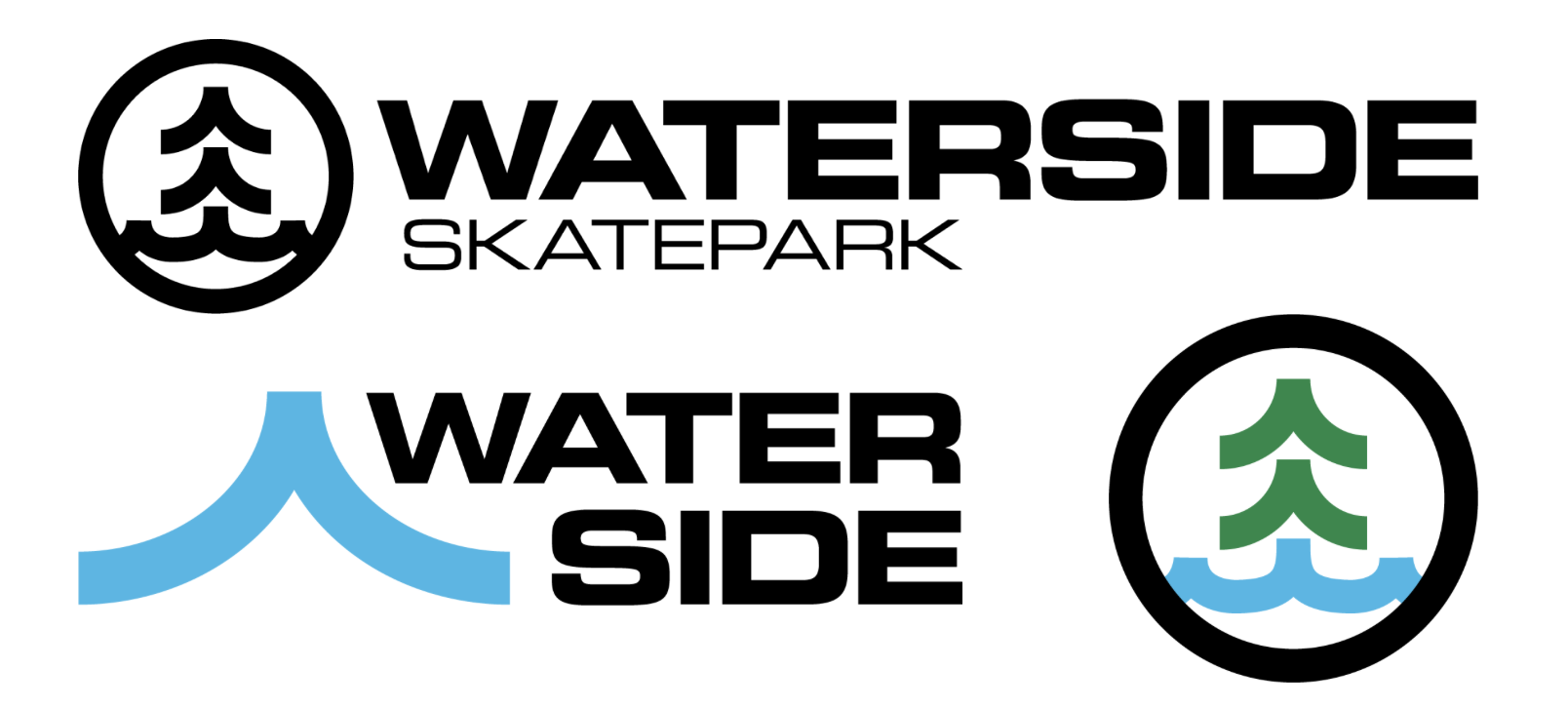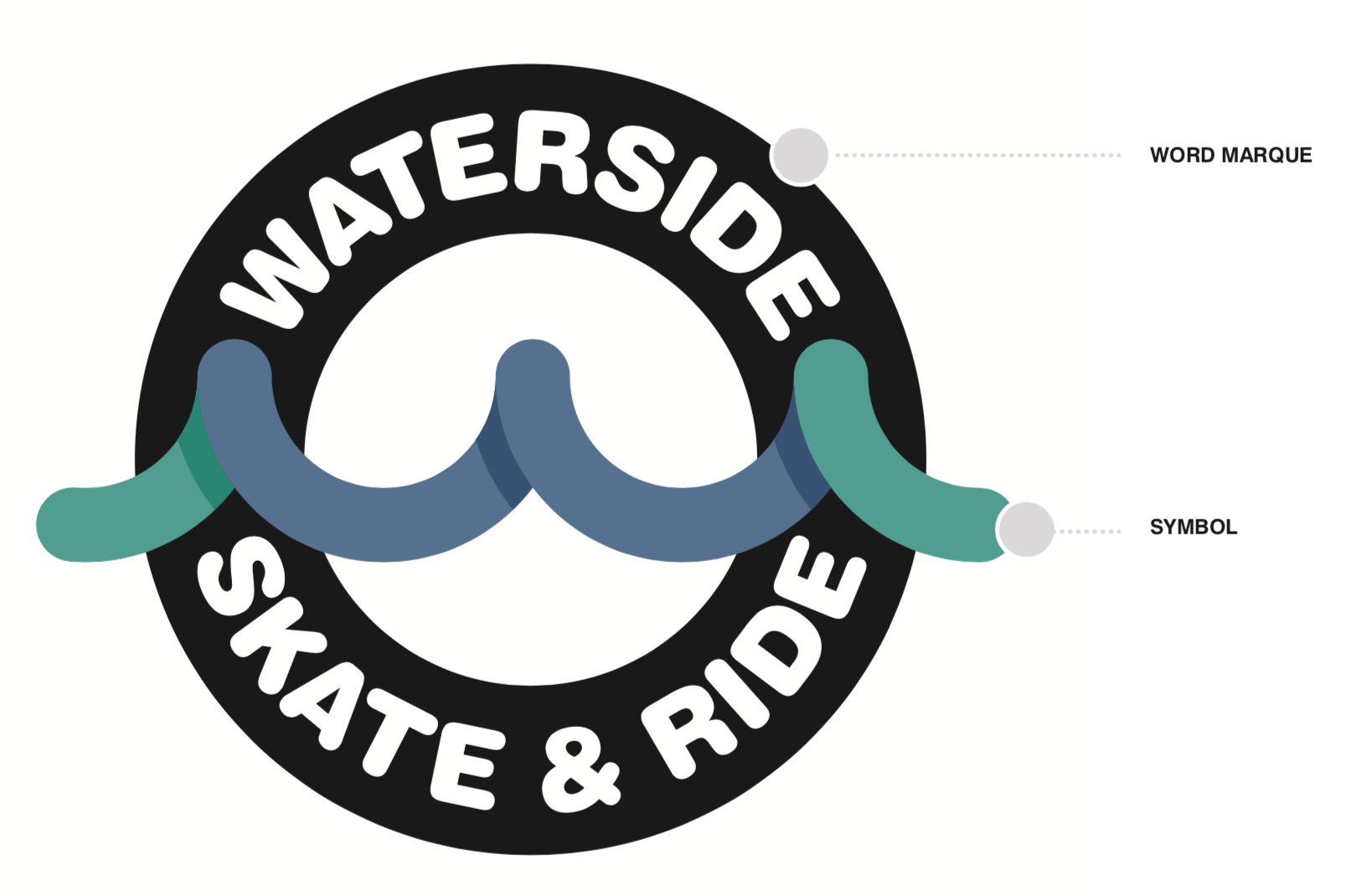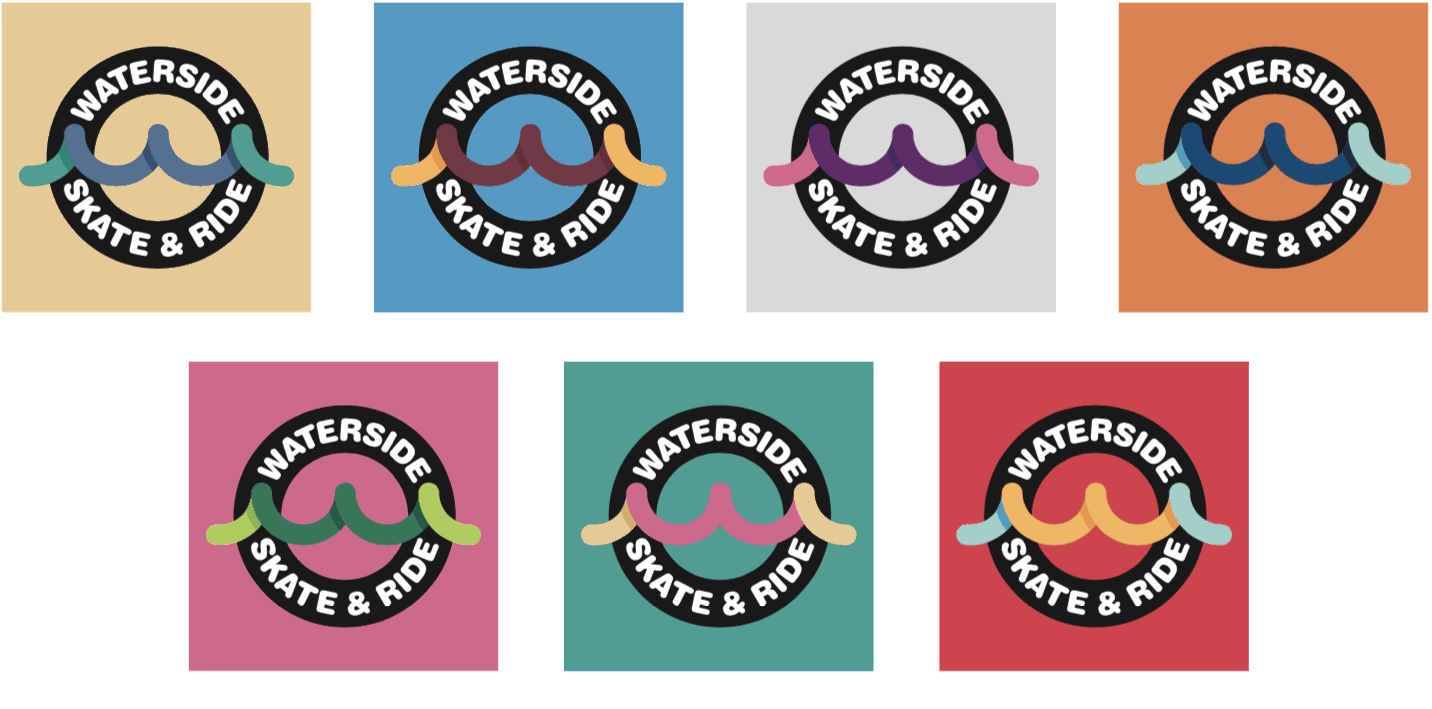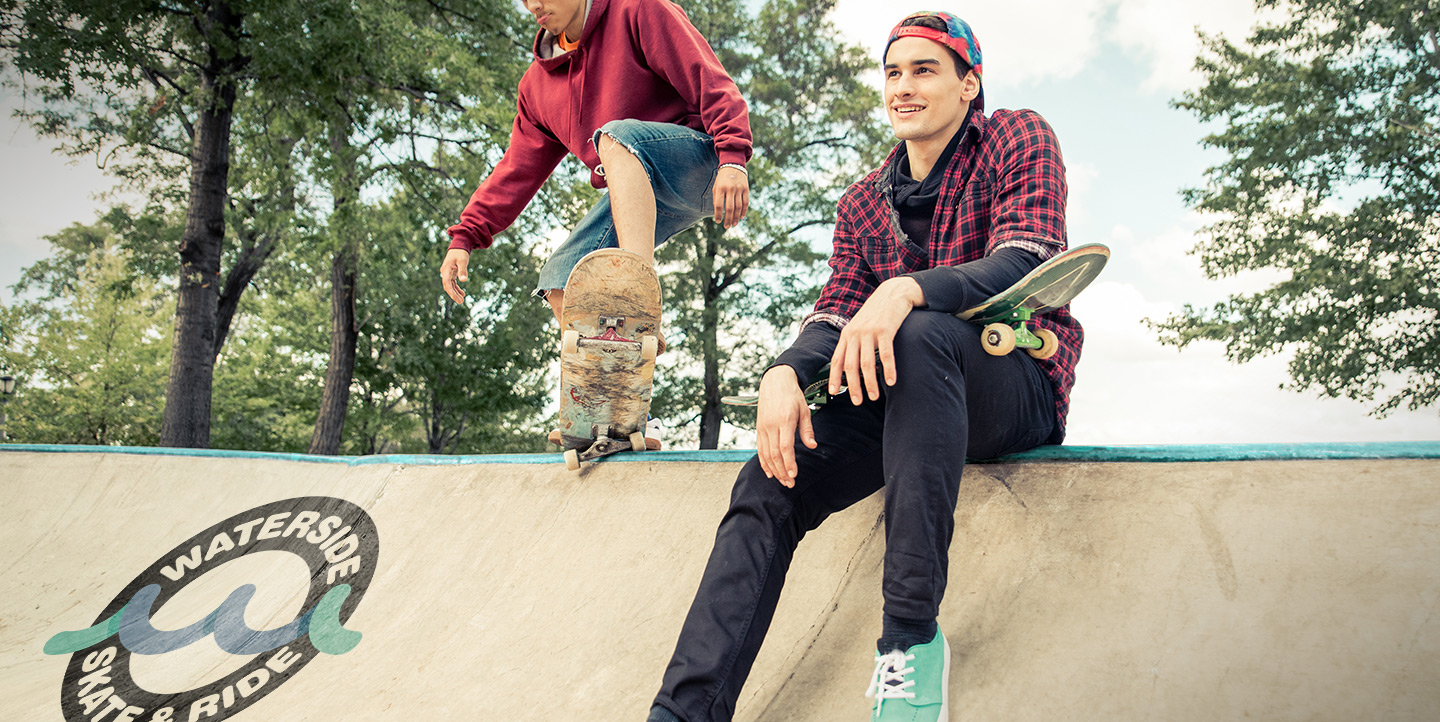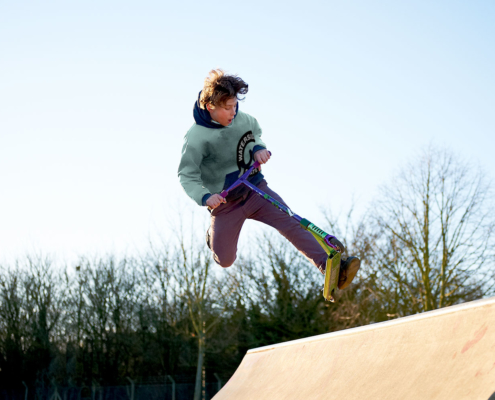Growing up firmly attached to skate culture, fashion, video parts, deck designs, inventive tricks and everything else; this was a bit of a dream come true. I’ve always felt a connection to brands that don’t take themselves too seriously, and allow pure creative freedom. Skate brands featuring awesome scratchy gothic illustrations like those found on ‘enjoi’ and ‘welcome’ were (and still are) personal favourites.
When putting together branding for a client it is important to first assess who the client is and who the key stakeholders are, in the case of ‘Waterside skatepark’ in Hythe, this was a tricky situation as it had two key and very different audiences; the youth that would use the skatepark, and the investors that were needed to help fund the building of the skatepark. This caused a bit of a dilemma as we needed to create something that was interesting and cool enough for the younger audience, but also something reserved enough that investors could feel confident to invest in.
This was a difficult task as a lot of people in the skate scene are sick and tired of their culture being commercialised – for example when ‘Nike’ first started to cash in with their skate shoes ‘Nike SB’ the product was generally boycotted for some time, until Nike had proved that they were passionate enough about the sport (by putting a lot of money into the right places) that some skaters started to come round to the idea. Adidas had a head start in this regard as one of their classic shoes the ‘Stan Smiths’ were a favourite among early day skaters as it was one of the only shoes around at the time which suited the sport – this was because Stan Smith the tennis player was a keen skater, and often used his custom tennis shoe for the court and for skating through New York after practice so he designed the shoe to suit that need.
 https://zapcreative.co.uk/wp-content/uploads/2020/11/flexible.jpg
999
2000
James Golding
https://zapcreative.co.uk/wp-content/uploads/2020/06/zap_logo_250sq_white-01.svg
James Golding2020-12-31 10:57:552025-01-13 17:17:51Long live the flexible
https://zapcreative.co.uk/wp-content/uploads/2020/11/flexible.jpg
999
2000
James Golding
https://zapcreative.co.uk/wp-content/uploads/2020/06/zap_logo_250sq_white-01.svg
James Golding2020-12-31 10:57:552025-01-13 17:17:51Long live the flexible



